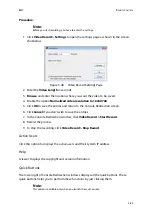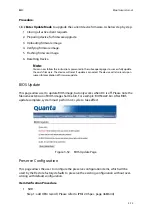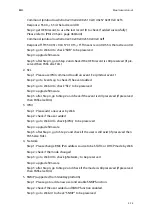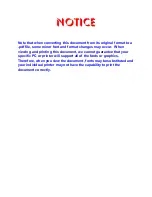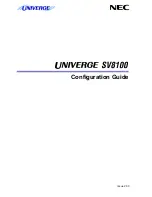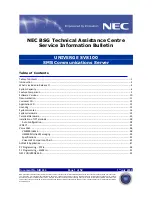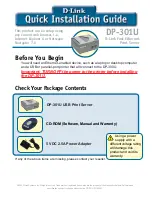
Rack Mount Warnings
Note:
The following installation guidelines are required by UL for maintaining safety
compliance when installing your system into a rack.
The equipment rack must be anchored to an unmovable support to prevent it from tipping
when a server or piece of equipment is extended from it. The equipment rack must be
installed according to the rack manufacturer's instructions.
Install equipment in the rack from the bottom up, with the heaviest equipment at the bottom of
the rack.
Extend only one piece of equipment from the rack at a time.
You are responsible for installing a main power disconnect for the entire rack unit. This main
disconnect must be readily accessible, and it must be labeled as controlling power to the
entire unit, not just to the server(s).
To avoid risk of potential electric shock, a proper safety ground must be implemented for the
rack and each piece of equipment installed in it.
Elevated Operating Ambient - If installed in a closed or multi-unit rack assembly, the operating
ambient temperature of the rack environment may be greater than room ambient. Therefore,
consideration should be given to installing the equipment in an environment compatible with
the maximum ambient temperature (Tma) specified by the manufacturer.
Reduced Air Flow - Installation of the equipment in a rack should be such that the amount of
air flow required for safe operation of the equipment is not compromised.
Mechanical Loading - Mounting of the equipment in the rack should be such that a hazardous
condition is not achieved due to uneven mechanical loading.
Circuit Overloading - Consideration should be given to the connection of the equipment to the
supply circuit and the effect that overloading of the circuits might have on overcurrent
protection and supply wiring. Appropriate consideration of equipment nameplate ratings
should be used when addressing this concern.
Reliable Earthing - Reliable earthing of rack-mounted equipment should be maintained.
Particular attention should be given to supply connections other than direct connections to the
branch circuit (e.g. use of power strips).
Electrostatic Discharge (ESD)
Caution:
ESD can damage drives, boards, and other parts. We recommend that you perform
all procedures at an ESD workstation. If one is not available, provide some ESD protection by
wearing an antistatic wrist strap attached to chassis ground -- any unpainted metal surface --
on your server when handling parts.
Always handle boards carefully. They can be extremely sensitive to ESD. Hold boards only by
their edges. After removing a board from its protective wrapper or from the server, place the
board component side up on a grounded, static free surface. Use a conductive foam pad if
available but not the board wrapper. Do not slide board over any surface.
Other Hazards
Battery Replacement
Caution:
There is the danger of explosion if the battery is incorrectly replaced. When
replacing the battery, use only the battery recommended by the equipment manufacturer.
Dispose of batteries according to local ordinances and regulations.
Do not attempt to recharge a battery.
Do not attempt to disassemble, puncture, or otherwise damage a battery.
Cooling and Airflow
Caution:
Carefully route cables as directed to minimize airflow blockage and cooling
problems. For proper cooling and airflow, operate the system only with the chassis covers
installed. Operating the system without the covers in place can damage system parts. To
install the covers:
Содержание QuantaGrid Series
Страница 1: ...Version 1 0 QuantaGrid Series D51PC 1U Versatile Compact 2 Socket Server User s Guide...
Страница 7: ...TABLE OF CONTENT VI Regulatory and Compliance Information...
Страница 51: ...BIOS CHECKPOINTS 2 21 b Error code POST Error MRC Fatal Warning Code One reset switch To trigger system reset...
Страница 52: ...BMC Chapter 3 This section provides information and key features of BMC Baseboard Management Controller...
Страница 128: ...This page left blank intentionally...



